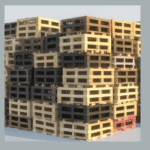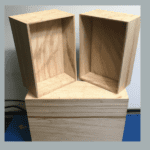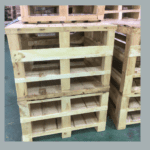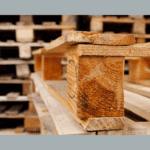The pallet is the life of the packaging industry. Almost every task in that industry requires a pallet, be it storing, shipping, strapping, or wrapping products. The success of a shipment depends on the pallet used. Since it’s such a critical element, the manufacturing and packaging companies must decide which type of pallet is good for their operations.
Luckily, there are two types of pallets: block and stringer pallets. This article discusses their similarities and differences and how you can make the right choice for your company. But firstly, what are block and stringer pallets?
Block pallet
The block pallet is the common type of pallet in Europe, and it’s usually made of softwood. It’s named block pallet because of its nine blocks foundation. A solid block supports each corner of the pallet. There is a block in the middle of each side of the pallet. There is one in the center that carries the unit load of the package. The block pallet may and may not have bottom deckboards.
The other name for a block pallet is a “four-way” block. The name is given because the tines of a forklift can fit into it from all sides. The block pallet looks firmer than the stringer pallet, but that is not so true based on head tests that have been performed.
Stringer pallet
The stringer pallet is mostly used in the Americas; North, Central and South America. The structural design shows three 2×3″ or 2×4″ stringers that are crammed between its top and bottom deckboards. The stringer provides support and carries the unit load of the pallet. Stringer pallets are usually made of hardwood.
Forklift tines can only fit into a stringer pallet from two sides, although there’s a method of chamfering the pallet to be accessible from all four sides.
Which one is the best for your company or shipment?
There are many factors to consider regarding what type of pallet to choose for your company or next shipment. One of them includes the destination of the shipment. Stringers are commonly used and accepted in the United States and other American nations, and block pallets belong to European countries. You should meet these requirements to avoid problems during your shipment.
Another factor to consider is the weight of the product. You should test your package on the two pallets to see which one holds better. It’s better to conduct the test as the shipment may take days, and the weight may deform the pallet. It’s even worse when it deforms while it’s been lifted by the forklift or pallet jack.
Whichever you pick, don’t forget to consider the type of products you’re shipping. For example, pallets for shipping food, beverage, chemical, and pharmaceutical products must be molds/pests treated.
Block pallet or Stringer Pallet: which is really stronger?
As mentioned earlier, it’s generally believed that block pallets are stronger than stringer pallets. The statement is merely an assumption that’s reached based on the appearances of the two pallets. Although some people claim to have experienced string pallets collapsing under the stress of heavy load, it’s not enough to say block pallets are stronger. The failure could be from the pallet design or manufacturer. The block pallet may not have been designed to support that much load.
For this reason, we advise you to talk with a pallet expert before choosing the pallet for your company or shipment. Upstate Packing Solutions is ready to help. We can assist you in designing custom block or stringer pallets for your freight and operations. Ensure you reach out to us today.






